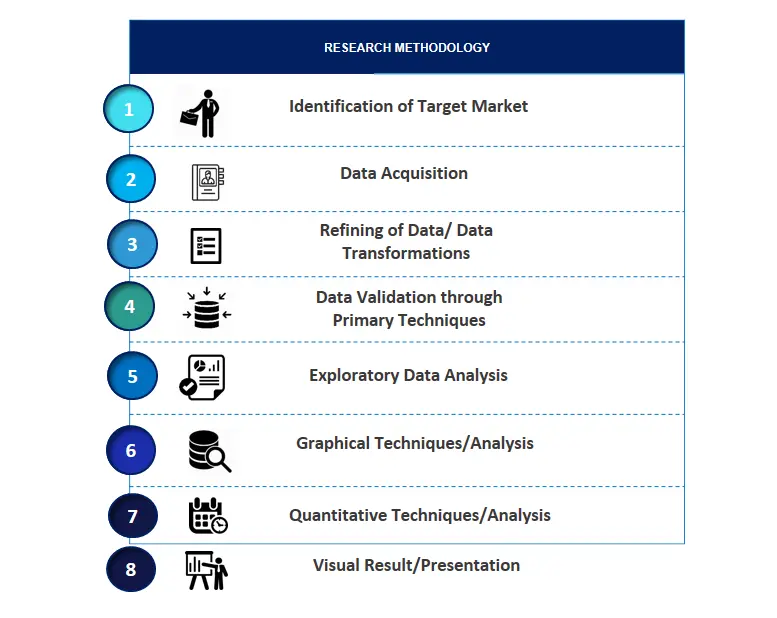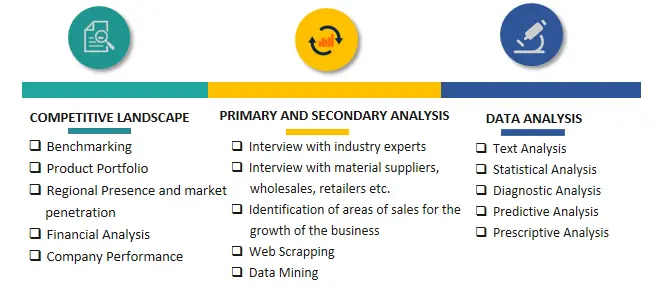
Asia Pacific Eyewear Market Trends, Share, Size, Demand, Revenue and Future Outlook
Asia Pacific Eyewear Market Growth, Size, Trends Analysis - By Product, By Distribution Channel - Regional Outlook, Competitive Strategies and Segment Forecast to 2033
| Published: Dec-2024 | Report ID: FMCG24219 | Pages: 1 - 157 | Formats*: |
| Category : Consumer & Retail | |||
- Huawei introduced Eyewear 2, its newest innovation-backed product, in China in May 2024. The semi-framed, rectangular eyewear is powered by lenses that are UV400 protected. Sleeker temples, silicon-made changeable nose pads, an ergonomic arch, an open acoustics design, a dual-mic layout, a larger battery, magnetic charging, small case folds, and touch controls are also features in this device.
- In March 2024, LensCrafters, an eyeglasses brand owned by the Italian corporation Luxottica Group, was purchased by Reliance Retail, one of the leading businesses in a number of industries, including consumer goods, fashion, electronics, and e-commerce. The acquisition was handled by DLF, which was operating a franchised chain of LensCrafters locations around the nation.


| Report Metric | Details |
| Market size available for years | 2020-2033 |
| Base year considered | 2023 |
| Forecast period | 2024-2033 |
| Segments covered | By Product, By Distribution Channel |
| Regions covered | Australia, China, India, Japan, South Korea, Rest of Asia-Pacific |
| Companies Covered | Essilor; HOYA Corp; JINS Eyewear US, Inc; Seiko Optical Products Co., Ltd; PRADA S.P.A; Lenskart; Bolon; SAFILO GROUP S.P.A; Huawei Device Co., Ltd; Reliance Retail. |
- Eyewear Manufacturers
- Retailers and Distributors
- Healthcare Professionals
- Fashion and Lifestyle Brands
- Government and Regulatory Bodies
- Investors and Venture Capitalists
- Technology Innovators
| By Product: | |
| By Distribution Channel: |
- Asia Pacific Eyewear Market Size (FY’2024-FY’2033)
- Overview of Asia Pacific Eyewear Market
- Segmentation of Asia Pacific Eyewear Market By Product (Contact lenses, Spectacles, Sunglasses)
- Segmentation of Asia Pacific Eyewear Market By Distribution Channel (Store-based, E-commerce, Others)
- Statistical Snap of Asia Pacific Eyewear Market
- Expansion Analysis of Asia Pacific Eyewear Market
- Problems and Obstacles in Asia Pacific Eyewear Market
- Competitive Landscape in the Asia Pacific Eyewear Market
- Impact of COVID-19 and Demonetization on Asia Pacific Eyewear Market
- Details on Current Investment in Asia Pacific Eyewear Market
- Competitive Analysis of Asia Pacific Eyewear Market
- Prominent Players in the Asia Pacific Eyewear Market
- SWOT Analysis of Asia Pacific Eyewear Market
- Asia Pacific Eyewear Market Future Outlook and Projections (FY’2024-FY’2033)
- Recommendations from Analyst
1.1. Scope of the report1.2. Market segment analysis
2.1. Research data source2.1.1. Secondary Data2.1.2. Primary Data2.1.3. SPER’s internal database2.1.4. Premium insight from KOL’s2.2. Market size estimation2.2.1. Top-down and Bottom-up approach2.3. Data triangulation
4.1. Driver, Restraint, Opportunity and Challenges analysis4.1.1. Drivers4.1.2. Restraints4.1.3. Opportunities4.1.4. Challenges4.2. COVID-19 Impacts of the Asia Pacific Eyewear Market.
5.1. SWOT Analysis5.1.1. Strengths5.1.2. Weaknesses5.1.3. Opportunities5.1.4. Threats5.2. PESTEL Analysis5.2.1. Political Landscape5.2.2. Economic Landscape5.2.3. Social Landscape5.2.4. Technological Landscape5.2.5. Environmental Landscape5.2.6. Legal Landscape5.3. PORTER’s Five Forces5.3.1. Bargaining power of suppliers5.3.2. Bargaining power of buyers5.3.3. Threat of Substitute5.3.4. Threat of new entrant5.3.5. Competitive rivalry5.4. Heat Map Analysis
6.1. Asia Pacific Eyewear Market Manufacturing Base Distribution, Sales Area, Product Type6.2. Mergers & Acquisitions, Partnerships, Product Launch, and Collaboration in Asia Pacific Eyewear Market
7.1. Asia Pacific Eyewear Market Size, Share and Forecast, By Product, 2020-20267.2. Asia Pacific Eyewear Market Size, Share and Forecast, By Product, 2027-20337.3. Contact lenses7.4. Spectacles7.5. Sunglasses
8.1. Asia Pacific Eyewear Market Size, Share and Forecast, By Distribution Channel, 2020-20268.2. Asia Pacific Eyewear Market Size, Share and Forecast, By Distribution Channel, 2027-20338.3. E-commerce8.4. Store-based8.5. Others
9.1. Asia Pacific Eyewear Market Size and Market Share
10.1. Asia Pacific Eyewear Market Size and Market Share By Region (2020-2026)10.2. Asia Pacific Eyewear Market Size and Market Share By Region (2027-2033)10.3. Australia10.4. China10.5. India10.6. Japan10.7. South Korea10.8. Rest of Asia-Pacific
11.1. Essilor11.1.1. Company details11.1.2. Financial outlook11.1.3. Product summary11.1.4. Recent developments11.2. HOYA Corporation11.2.1. Company details11.2.2. Financial outlook11.2.3. Product summary11.2.4. Recent developments11.3. JINS Eyewear US, Inc11.3.1. Company details11.3.2. Financial outlook11.3.3. Product summary11.3.4. Recent developments11.4. Seiko Optical Products Co., Ltd11.4.1. Company details11.4.2. Financial outlook11.4.3. Product summary11.4.4. Recent developments11.5. PRADA S.P.A11.5.1. Company details11.5.2. Financial outlook11.5.3. Product summary11.5.4. Recent developments11.6. Lenskart11.6.1. Company details11.6.2. Financial outlook11.6.3. Product summary11.6.4. Recent developments11.7. Bolon11.7.1. Company details11.7.2. Financial outlook11.7.3. Product summary11.7.4. Recent developments11.8. SAFILO GROUP S.P.A11.8.1. Company details11.8.2. Financial outlook11.8.3. Product summary11.8.4. Recent developments11.9. Huawei Device Co., Ltd11.9.1. Company details11.9.2. Financial outlook11.9.3. Product summary11.9.4. Recent developments11.10. Reliance Retail11.10.1. Company details11.10.2. Financial outlook11.10.3. Product summary11.10.4. Recent developments11.11. Others
SPER Market Research’s methodology uses great emphasis on primary research to ensure that the market intelligence insights are up to date, reliable and accurate. Primary interviews are done with players involved in each phase of a supply chain to analyze the market forecasting. The secondary research method is used to help you fully understand how the future markets and the spending patterns look likes.
The report is based on in-depth qualitative and quantitative analysis of the Product Market. The quantitative analysis involves the application of various projection and sampling techniques. The qualitative analysis involves primary interviews, surveys, and vendor briefings. The data gathered as a result of these processes are validated through experts opinion. Our research methodology entails an ideal mixture of primary and secondary initiatives.



Frequently Asked Questions About This Report
PLACE AN ORDER
Year End Discount
Sample Report
Pre-Purchase Inquiry
NEED CUSTOMIZATION?
Request CustomizationCALL OR EMAIL US
100% Secure Payment






Related Reports
Our Global Clients
Our data-driven insights have influenced the strategy of 200+ reputed companies across the globe.




















